7 Common Reasons Why a Commercial Roof Leaks
Why does a commercial roof leak? Learn about seven common issues that cause leaks to occur on flat roofs in Florida.
A commercial roof leak in Florida can occur because it is vulnerable to many issues due to tropical weather conditions. From extreme heat and high winds to torrential rains and hail, many elements can cause a roof system to leak or break down prematurely. While today’s roofing systems are tougher than they were 20 years ago, neglecting roof maintenance can lead to a leaking roof and premature roof failure. For the best insurance against the high costs associated with roof repairs and replacement, Advanced Roofing recommends semi-annual inspections and maintenance to ensure your roof system performs optimally throughout its service life.
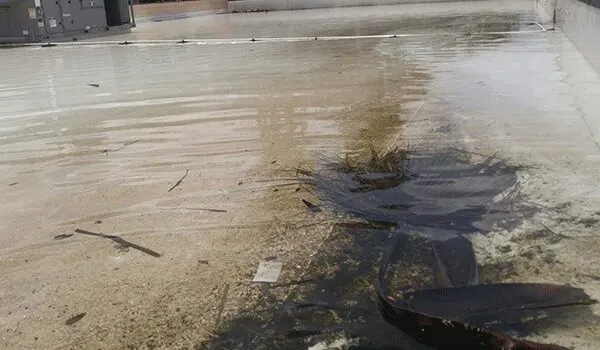
- Metal Flashings
- Clogged Gutters
- Pitch Pocket
- Air Conditioning Stands
- Membrane Blistering
- Ponding Water
- Plant Growth
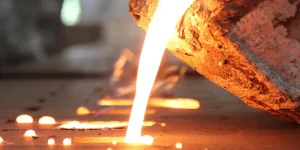 Ninety-five percent of commercial roof leaks occur due to flashing damage. A roof flashing is the sheet metal installed at any breaks, joints, or edges on your roof to prevent leaks. Flashings are usually composed of aluminum or galvanized sheet metal. If flashing is damaged, improperly installed, or becomes loose due to wind or storms, roof leaks can occur. Also, due to the tropical weather conditions in Florida, roof flashings are subject to extreme thermal heat expansion and contraction that can cause the flashing to tear or break.
Ninety-five percent of commercial roof leaks occur due to flashing damage. A roof flashing is the sheet metal installed at any breaks, joints, or edges on your roof to prevent leaks. Flashings are usually composed of aluminum or galvanized sheet metal. If flashing is damaged, improperly installed, or becomes loose due to wind or storms, roof leaks can occur. Also, due to the tropical weather conditions in Florida, roof flashings are subject to extreme thermal heat expansion and contraction that can cause the flashing to tear or break.
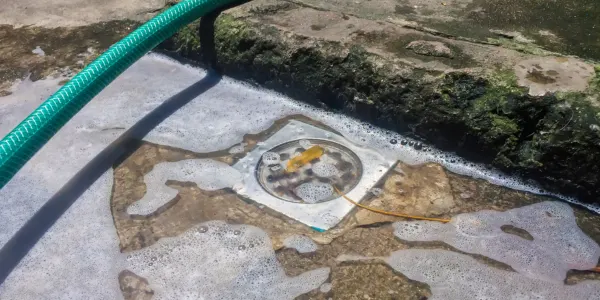 Clogged drains, scuppers, and improper downspout sizing are all common reasons for a roof leak. Be sure to inspect these areas every six months to avoid ponding water that can deteriorate a roof and leave it vulnerable to leaks and structural damage. Additionally, excessive moisture can lead to mold, fungus, and plant growth which is the perfect breeding ground for mosquitos and slip and falls.
Clogged drains, scuppers, and improper downspout sizing are all common reasons for a roof leak. Be sure to inspect these areas every six months to avoid ponding water that can deteriorate a roof and leave it vulnerable to leaks and structural damage. Additionally, excessive moisture can lead to mold, fungus, and plant growth which is the perfect breeding ground for mosquitos and slip and falls.
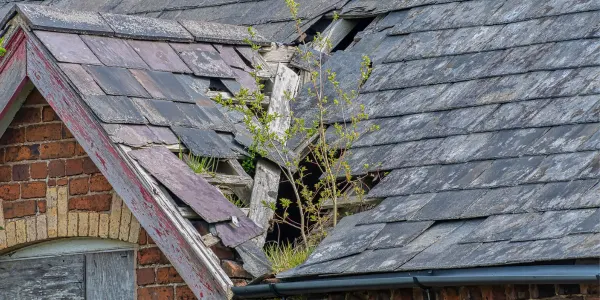 The second most common area where a commercial roof leak can occur is pitch pockets where pipes penetrate the roof system. All roof penetrations are prone to leaks and must be properly sealed to protect against roof leaks. Roof penetrations can include pipes, HVAC components, conduits, vents, drains, gas lines, or other objects that are on top of the roof.
The second most common area where a commercial roof leak can occur is pitch pockets where pipes penetrate the roof system. All roof penetrations are prone to leaks and must be properly sealed to protect against roof leaks. Roof penetrations can include pipes, HVAC components, conduits, vents, drains, gas lines, or other objects that are on top of the roof.
 According to an independent study by GAF, 29% of roof leaks occur at the air conditioning equipment. HVAC curb flashings, pitch pan, deficient cabinetry, and condensation issues can be typical sources for a roof leak to occur.
According to an independent study by GAF, 29% of roof leaks occur at the air conditioning equipment. HVAC curb flashings, pitch pan, deficient cabinetry, and condensation issues can be typical sources for a roof leak to occur.
 Blistering happens when the air is trapped between layers of felt or plies. When the air heats it causes air pockets which can lead to puncture when the blister breaks particularly if it is a larger blister and located on a joint. Splitting can be caused by excessive pressure, ponding water or simply poor workmanship.
Blistering happens when the air is trapped between layers of felt or plies. When the air heats it causes air pockets which can lead to puncture when the blister breaks particularly if it is a larger blister and located on a joint. Splitting can be caused by excessive pressure, ponding water or simply poor workmanship.
 Ponding water is a pool of water that does not drain from a roof for up to 48 hours. If ponding water occurs on the edge of your roof, you can install scuppers to collect the excess water or an automatic pump can be installed to remove water in the middle of the roof. Also, you can install new drains or have the lower areas of the roof built up with tapered insulation to stop the ponding water altogether.
Ponding water is a pool of water that does not drain from a roof for up to 48 hours. If ponding water occurs on the edge of your roof, you can install scuppers to collect the excess water or an automatic pump can be installed to remove water in the middle of the roof. Also, you can install new drains or have the lower areas of the roof built up with tapered insulation to stop the ponding water altogether.
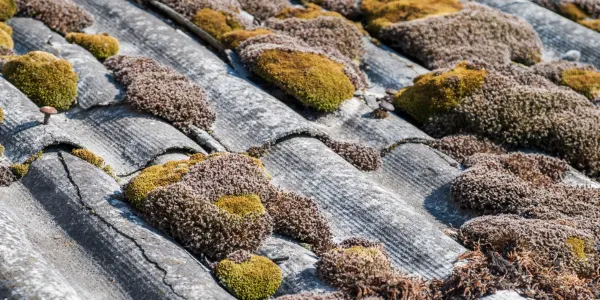 Plant growth is a result of a tear in the roof membrane. The smallest of tears can trap moisture in the roof system causing plants to grow and damage the roof insulation. Be sure to clear roof drains, scuppers, and gutters from debris, as well as, inspect the membrane field area twice a year, and following major storms.
Plant growth is a result of a tear in the roof membrane. The smallest of tears can trap moisture in the roof system causing plants to grow and damage the roof insulation. Be sure to clear roof drains, scuppers, and gutters from debris, as well as, inspect the membrane field area twice a year, and following major storms.
